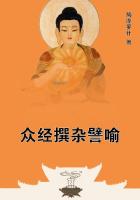But meanwhile we have another story from an inion on copper-plates which is to be seen preserved in the Collector's office at Nellore.[36]It has been carefully edited by Mr.H.Krishna Sastri.According to this it would appear that Bukka I.,who undoubtedly was a man of war,usurped the throne.It asserts that the father of Harihara I.,who was named Samgama,had five sons.The eldest was Harihara himself,the second Kampa,and the third Bukka.We want to know who succeeded Harihara.There is extant an inion of Bukka dated in 1354,and there is this Nellore inion dated in 1356.The latter comes from a far-off country near the eastern coast,and it relates that Kampa succeeded Harihara,and that Samgama II.,son of Kampa,succeeded his father,and granted a village in the Nellore district to the Brahmans on a date which corresponds to May 3,A.D.1356.It implies that Samgama had succeeded his father Kampa exactly a year previous to the grant.Thus it claims that Kampa was king from 1343to 1355.We know nothing more of this,and there is only one other document at present known to exist which was executed in the reign either of Kampa or of Samgama This is alluded to by Mr.Krishna Sastri,who refers us to the colophon of the MADHAVIYADHATUVRITTI,according to which its author,Sayanacharya,uterine brother of the great Madhavacharya,was minister to king Samgama,son of Kampa.The only possible inference is that the succession to Harihara was disputed,and that somehow Bukka got the upper hand and at least as early as 1354declared himself king,afterwards claiming to have immediately succeeded Harihara.It will be seen farther on that in almost every case the kingdom was racked with dissension on the demise of the sovereign,and that year after year the members of the reigning family were subjected to violence and murder in order that one or other of them might establish himself as head of the State.
On the assumption,therefore,that the reign of Bukka I.lasted from 1343to 1379,we turn to Firishtah to learn what were this king's relations with the followers of Islam,now supreme on the north of the Krishna.
Just after his accession,as it would appear,occurred the successful campaign alluded to above,in which a combination of Hindus from different States drove back the invaders.Here is Firishtah's account of what took place.[37]He is speaking of the year A.H.744,which lasted from May 26,A.D.1343,to May 15,1344,and he says that Krishna Naik,son of Rudra Deva of Warangal,went privately to Ballala Deva and urged him to join a combination of Hindus with the view of driving out the Muhammadans from the Dakhan.The Ballala prince consented,and Krishna Naik promised,when the preparations were complete,to raise all the Hindus of Telingana and place himself at their head.
Ballala Deva then built the city of Vijayanagar,[38]raised an army,and the war began.Warangal,then in the hands of the Muhammadans,was reduced,and its governor,Imad-ul-Mulkh,retreated to Daulatabad or Devagiri.The two chiefs then induced other Rajahs of the Malabar and Kanara countries to join them,and the joint forces seized the whole of the Dakhan and expelled the Muhammadans there,"so that within a few months Muhammad Taghlak had no possessions in that quarter except Daulatabad."So far the Muhammadan historian.It is necessary to observe that this success of the Hindus was only temporary,for their enemies still swarmed in the Dakhan,and immediately after this contest the Hindus appear to have retired south of the Krishna,leaving the distracted country a prey to temporary anarchy.This,however,was of short duration,for though the domination of the Sultan of Delhi in that tract was completely destroyed,yet three years later,viz,on Friday the 24th Rabi-al-akhir A.H.748,according to Firishtah,a date which corresponds to Friday,August 3,A.D.1347,Ala-ud-din Bahmani was crowned sovereign of the Dakhan at Kulbarga,establishing a new dynasty which lasted for about 140years.
A few years after this there was a successful invasion of the Carnatic country by Ala-ud-Din;but though the army returned with some booty Firishtah does not claim for him a decisive victory.He does,however,claim that the new Sultan extended his territory as far south as the river Tungabhadra,"the vicinity of the fortress of Adoni."Ala-ud-din died at the age of sixty-seven on Sunday,February 2,A.D.1358,[39]and was succeeded by Muhammad Shah.The Raya of Vijayanagar had presented Ala-ud-din with a ruby of inestimable price,and this,set in a bird of paradise composed of precious stones,the Sultan placed in the canopy over his throne;but some say that this was done by Muhammad,and that the ruby was placed above his umbrella of State.
Early in the reign of Muhammad it was discovered that the gold and silver coins of the Bahrami Sultans were being melted down in large quantities by the Hindus of Vijayanagar and Warangal,and numbers of the merchants were put to death.At the same time Bukka I.,supported by his friend at Warangal,demanded the restoration of certain territories,[40]and as the Sultan was not ready for war,he "during a year and a half kept the ambassadors of the Raies at his court,and sent his own to Beejanugger to amuse his enemies."Finally he resolved on war,and made extravagant counter-demands on the Hindus.Bukka joined forces with Warangal,and Muhammad waged war on the latter state,plundering the country up to the capital,and retiring only on receipt of a large indemnity.Firishtah does not relate that any further campaign was at that time initiated,and we are therefore free to suppose that the Muhammadans were unable to press their advantage.Warangal was not long left in peace,and it may be well to glance at its subsequent history before returning to the events of the reign of Bukka at Vijayanagar.















